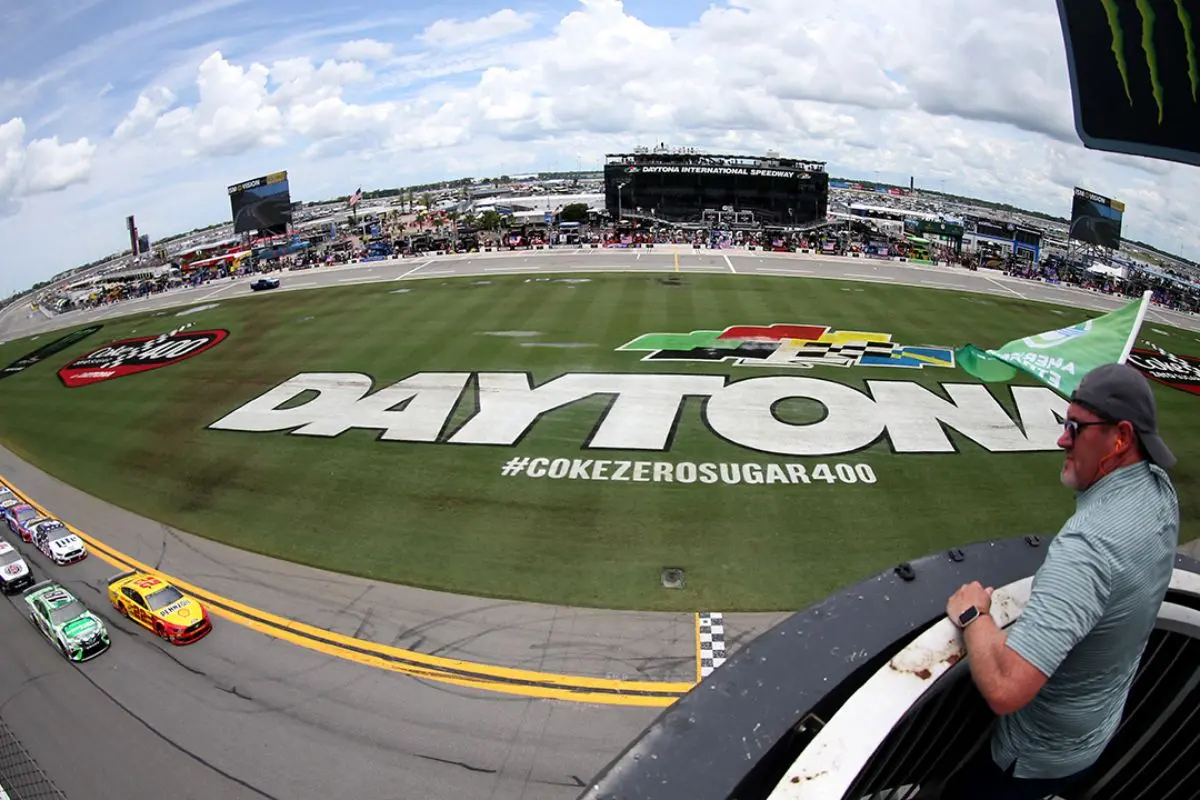The Coke Zero Sugar 400 at Daytona International Speedway is not just another NASCAR race. It is an unpredictable and emotional contest filled with high-speed drama, historical significance, and playoff implications. As the regular season finale since 2020, it has become one of the most pivotal stops on the schedule. Drivers enter the night knowing careers can change in a single lap, and fans understand they are about to watch one of the sport’s most chaotic spectacles unfold.
Key Highlights
-
The Coke Zero Sugar 400 serves as the NASCAR Cup Series regular-season finale since 2020.
-
Daytona’s superspeedway creates intense pack racing and the threat of “The Big One.”
-
The event has roots dating back to 1959 as the Firecracker 250.
-
Unpredictable winners have shaped playoff drama, including Justin Haley (2019) and William Byron (2020).
-
The race runs 160 laps and offers playoff points across three stages.
A Historic Legacy
The Coke Zero Sugar 400 traces its roots back to 1959, originally named the Firecracker 250 and run on Independence Day. It quickly became more than just a race—it was a celebration of America’s summer holiday. Over time, the race grew in distance and stature, moving through different sponsorships as the Pepsi 400, the Coke Zero 400, and now the Coke Zero Sugar 400. The decision in 1998 to switch the event to a nighttime race gave Daytona’s second Cup event an entirely new feel, with glowing lights adding intensity to the already demanding superspeedway.

Daytona’s Unique Challenge
The 2.5-mile Daytona International Speedway is unlike most tracks in NASCAR. Its steep 31-degree banking and wide surface force pack racing at nearly 200 miles per hour. Drafting is essential, meaning cars must work in tight formations to gain speed. One wrong bump can trigger “The Big One,” a multi-car crash that eliminates several drivers in a single instant. Daytona’s layout levels the playing field, giving smaller teams the rare chance to compete with powerhouse organizations if they find the right drafting partners.
Playoff Drama Under the Lights
Since NASCAR moved the Coke Zero Sugar 400 to the regular-season finale in 2020, the event has gained even greater significance. It is now the last chance for drivers to clinch a playoff berth. For some, it’s a fight for survival. For others, it’s a desperate gamble for glory. Underdogs thrive in this atmosphere, and several recent seasons have ended with unexpected winners who locked themselves into the playoffs at the last possible moment. At the same time, established contenders must walk a fine line, knowing one wrong move could wreck their momentum heading into the postseason.

Racing Style and Strategy
The Coke Zero Sugar 400 runs 160 laps for 400 miles, divided into three stages. The early laps often see drivers playing cautiously, waiting for the field to thin out. Mid-race strategy shifts become critical, with teams timing pit stops and drafting alliances to gain track position. The final stage is a storm of aggression, with lead changes nearly every lap and blocking at its most intense. More often than not, the closing laps turn into a blur of bold moves and high-risk drafting battles. Winning at Daytona often requires not only speed and precision but also racing luck and perfect timing.
Memorable Moments and Fan Connection
Few NASCAR races can match the history made under Daytona’s lights. Dale Earnhardt Jr.’s dominance cemented him as one of the best superspeedway drivers in the sport’s history. In 2001, Earnhardt Jr.’s emotional win in the Pepsi 400, just months after his father’s tragic accident at Daytona, remains one of NASCAR’s most powerful moments. More recently, unexpected victories from Justin Haley in 2019 and William Byron in 2020 proved how Daytona often reshapes careers overnight. Fans are drawn to this unpredictability, knowing the race can turn anyone into a hero.
The race has also grown into a summer festival at Daytona International Speedway, with concerts, fireworks, and celebrations that make it one of the most fan-friendly events of the year. Whether a casual viewer or a lifelong follower, the mix of speed, spectacle, and playoff implications makes the Coke Zero Sugar 400 a must-watch event on the NASCAR calendar.

News in Brief: Daytona Coke Zero Sugar 400 Legacy
The Coke Zero Sugar 400 at Daytona International Speedway stands as one of NASCAR’s most unpredictable and important events. First run in 1959 as the Firecracker 250, it has evolved into the Cup Series regular-season finale, offering drivers one final chance to make the playoffs. Daytona’s drafting packs, the looming threat of “The Big One,” and its history of underdog winners give the race unmatched drama. Fans embrace it as both a festival and a spectacle
ALSO READ: Highlights of the Daytona 500 at Daytona International Speedway
